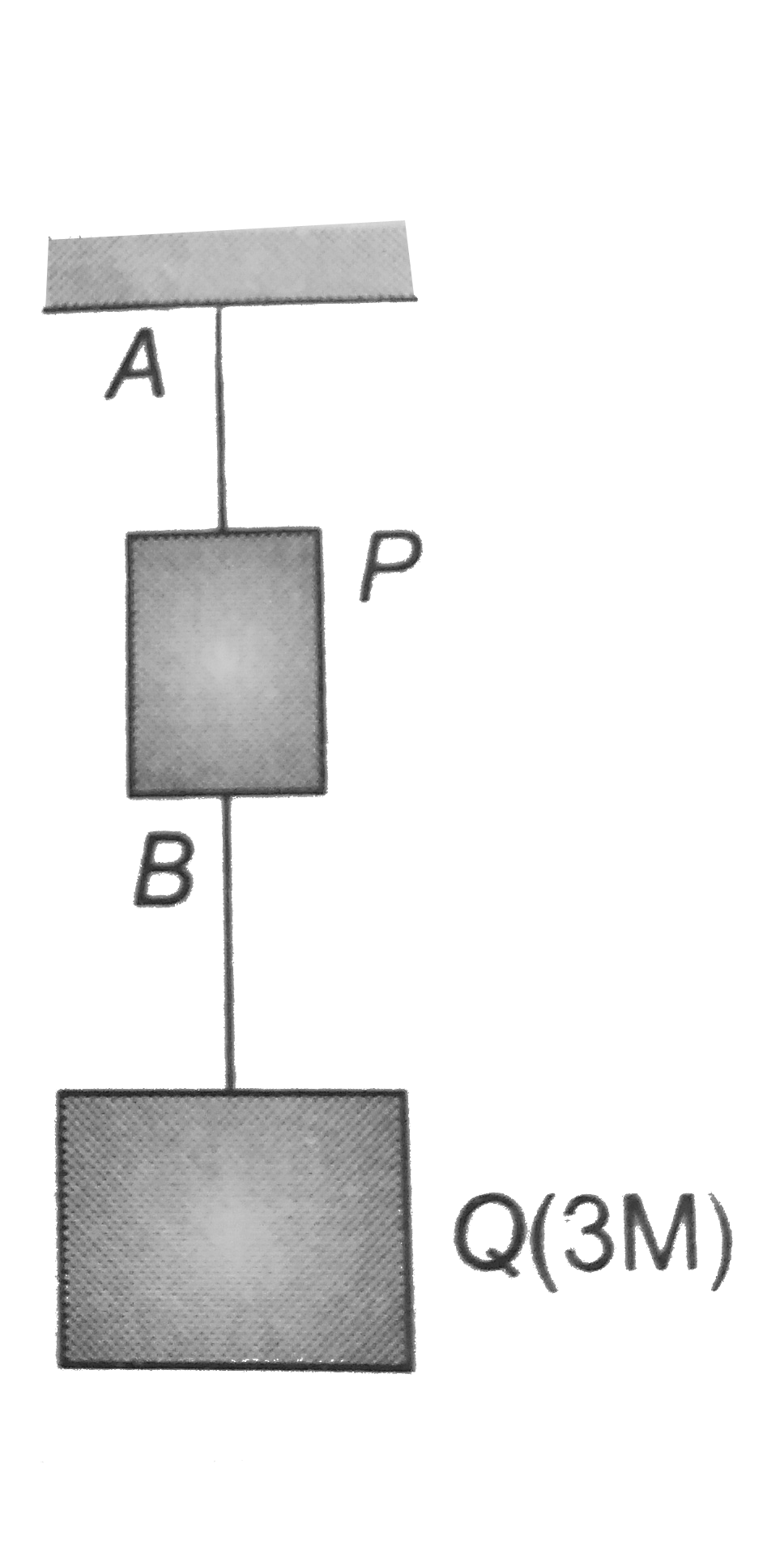_S01_005_Q01.png)
Find out the elongation in block. If mass area of cross-section and young modulus of block are m, A and y respectively.

Acceleration, a=Fm then T=m'a where ⇒m'=mlx
. T=ml×Fm=Fxl
Elongation in element 'd'=TdxAY
total elongation, δ=l∫0TdxAYd=l∫0FxdxAlY=Fl2AY
Note :- Try this problem. If friction is given between block and surface (μ= frication coefficient), and
Case : (I)F<μmg
(ii) F>μmg
In both cases answer will be Fl2AY
Topper's Solved these Questions
- BOOK - RESONANCECHAPTER - ELASTICITY AND VISCOCITYEXERCISE - Exercise- 1 PART - I8videos
ELASTICITY AND VISCOCITY
- BOOK - RESONANCECHAPTER - ELASTICITY AND VISCOCITYEXERCISE - Exercise- 1 PART - II14videos
ELASTICITY AND VISCOCITY
- BOOK - RESONANCECHAPTER - DAILY PRACTICE PROBLEMSEXERCISE - dpp 92 illustration2videos
DAILY PRACTICE PROBLEMS
- BOOK - RESONANCECHAPTER - ELECTROMAGNETIC INDUCTIONEXERCISE - Exercise43videos
ELECTROMAGNETIC INDUCTION
Similar Questions
Knowledge Check
- Question 1 - Select One
Each of three blocks shows in figure has a mass 3 kg. The wire connecting blocks A and B has area of cross-section 0.005cm2 and Young's modulus of elasticity Y=2×1011N/m2 . Neglect friction. Find the elasticity potential energy stored per unit volume in wire connecting blocks A and B in steady state.
(Takeng=10m/s2)
 A500J/m3B1000J/m3C2000J/m3D3000J/m3
A500J/m3B1000J/m3C2000J/m3D3000J/m3 - Question 2 - Select One
A metal wire of length L, area of cross-section A and Young's modulus Y behaves as a spring of spring constant k.
Ak=YA/LBk=2YA/LCk=YA/2LDk=YL/A - Question 3 - Select One

Wires A and B are connected with blocks P and Q, as shown, the ratio of lengths radii and Young's modulus of wires A and B are r, 2r and 3r respectively (r is a constant). Find the mass of block P if ratio of increase in their corresponding length is 16r2. The mass of the block Q is 3MAMB3MC6MD9M
An object of mass m is suspended at the end of a massless wire of length L and area of cross -section A. Young modulus of the material of the wire is Y. If the mass is pulled down slightly its frequency of oscillation along the vertical direction is :
View SolutionA stone of mass m is attached to one end of a wire of cross-sectional area A and Young's modulus Y. The stone is revolved in a horizontal circle at a speed such that the wire makes an angle θ with the vertical. The strain produced in the wire will be
View SolutionA uniform wire of mass m, length L, area of cross-section A and Young's modulus Y hange from the ceiling. Its elongation under its own weight will be
View SolutionA metal wire of length L, area of cross-section A and young's modulus Y is stretched by a variable force F such that F is always slightly greater than the elastic forces of resistance in the wire. When the elongation of the wire is l
View SolutionIf a metal wire of length L, having area of cross-section A and young' s modulus Y . Behave as a spring of spring constant K. The value of K is
View Solution


